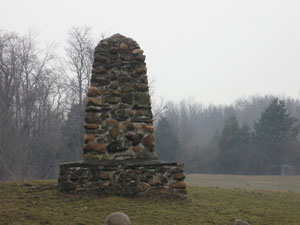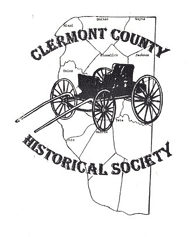By Ron Hill
Clermont County Historical Society

The earliest “roads” in Clermont County, Ohio were traces made by the hoofs of animals and footsteps of Native Americans. The most significant trace in the county was the Bullskin Trace, also known as the Xenia Trace. The Bullskin entered the county from Kentucky and passed through the center of the Shawnee Nation to Chalahgawtha, the principal village of the Shawnee in the 1770s and 1780s.
The Bullskin Trace entered Clermont County at the point where the Bullskin Creek enters the Ohio River (a good fording point across the Ohio River in early times) near Rural (the Hamlet was destroyed in the 1913 flood). It follows an alignment of present day SR 133, passing through Felicity, Bethel, Williamsburg and Edenton. It departs the county northeast of the village.
In prehistoric times it was used as a path to the Great Salt Licks located in Kentucky. The trail was shared by large game animals and the various Native American cultures which inhabited the area. The landing site at the mouth of Bullskin Creek served as a debarkation point for many settlers. The Trace served as a route to the interior of the county and as a result the development of the villages along it. As the settlers infiltrated the area the Trace was improved and became a road.
The Trace was used was by Daniel Boone on his escape from the Shawnee at Chalahgawtha in 1778. During the Indian Wars (1793) a vanguard of Gen. Anthony Wayne’s Army moved up the Trace and had a skirmish with Shawnee Indians near Stonelick Creek. Ammunition and supplies were transported up the Trace to Admiral Perry’s fleet on Lake Erie during the War of 1812. The Trace served as part of the Underground Railroad that was traveled by slaves headed to Canada.
In 1807 the Ohio State legislature enacted a law designating the trace as the Xenia State Road, one of the first roads in Ohio, and appropriated funds to improve it.
The Willing Workers of Edenton and the Blanchester Daughters of American Revolution erected a stone monument just east of Edenton in 1927 to celebrate the sesquicentennial of Boone’s escape. The monument still stands. In 2000 the Clermont County Bicentennial Committee erected a historical marker near the monument to commemorate the historical significance of the Bullskin Trail.
